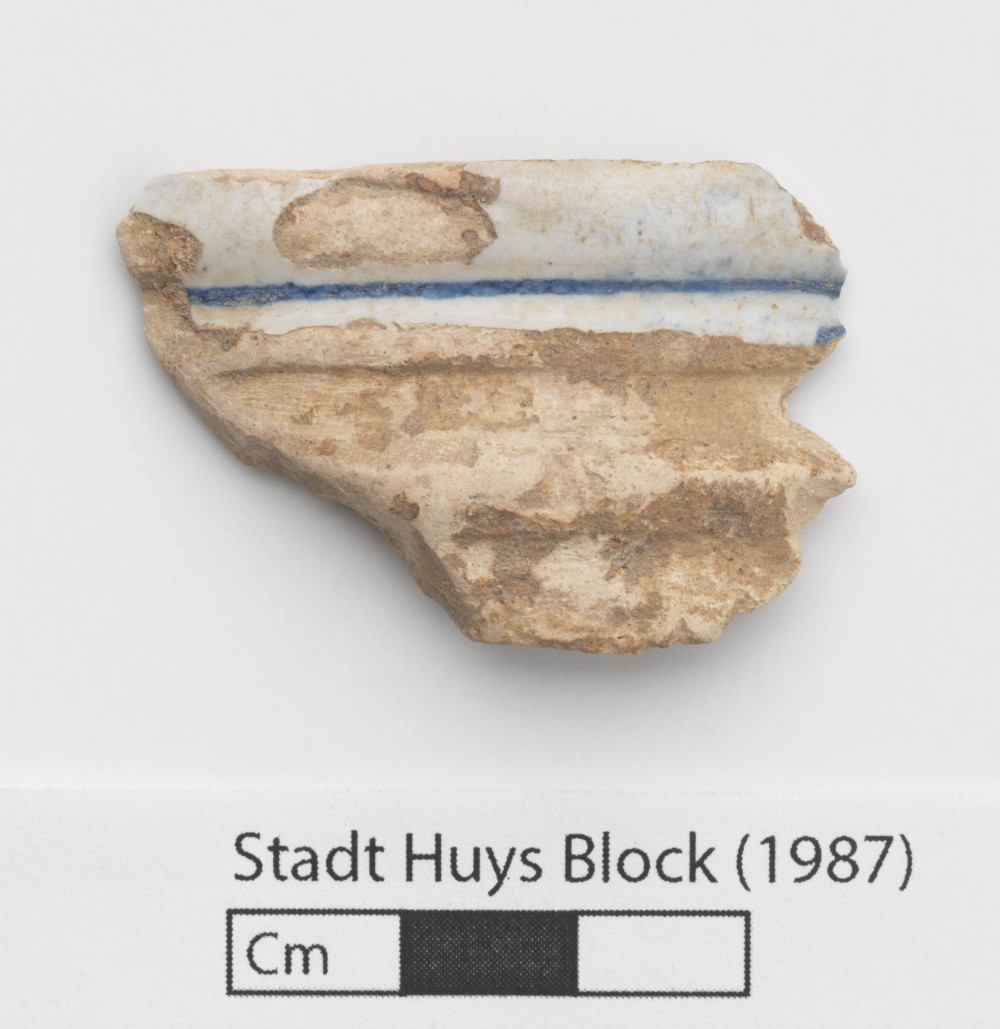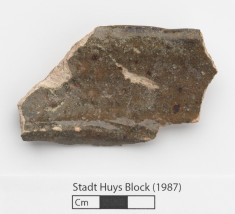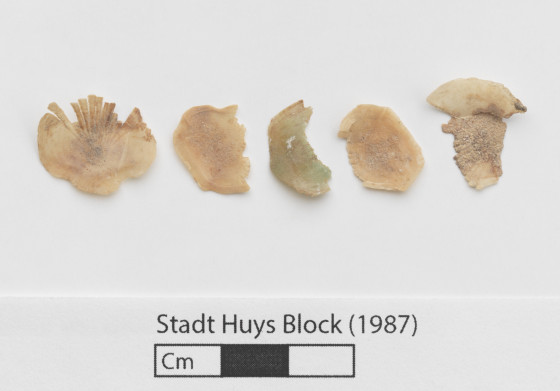Introduction: Lots 8, 9, and 15 are modern designations for adjacent parcels of land that were owned together and used as a single property until the early 1830's. Excavations produced important discoveries like that of the Colonial-era Lovelace Tavern, proving that significant archaeological resources could still exist in urban spaces. Project archaeologists were able to lobby for increased time and funds to continue their work on the strength of these finds, leading to additional discoveries. In all, the project provided considerable information about the history of New York City and its inhabitants from the 17th to the 20th centuries.
Rationale: Test Cut J was placed in the middle of the backyard of Lot 9 and was one of the first units excavated as part of the Stadt Huys project. The test cut yielded important information about the stratigraphy of the area and helped in the development of the site's testing methodology. Test Cut J consisted primarily of mixed fill, A concrete floor associated with the ca. 1819 building was also uncovered.
Results: This level contains a significant amount of mortar and plaster. The abundance of building materials indicates that a structure was likely destroyed in the immediate area. This level must also pre-date the ca. 1819 building as the demolition debris was found underneath its concrete floor (see TAQ).
Lot 9, Test Cut J, Stratum V, Level A
-
Collection method
Shovel, Trowel, Screen (1/4-inch mesh). Arbitrary 4-inch Level.
-
Soil description
Gray, Brown, and White Mortar and Decomposed Plaster
-
Munsell
5Y 5/6, 10YR 5/8











